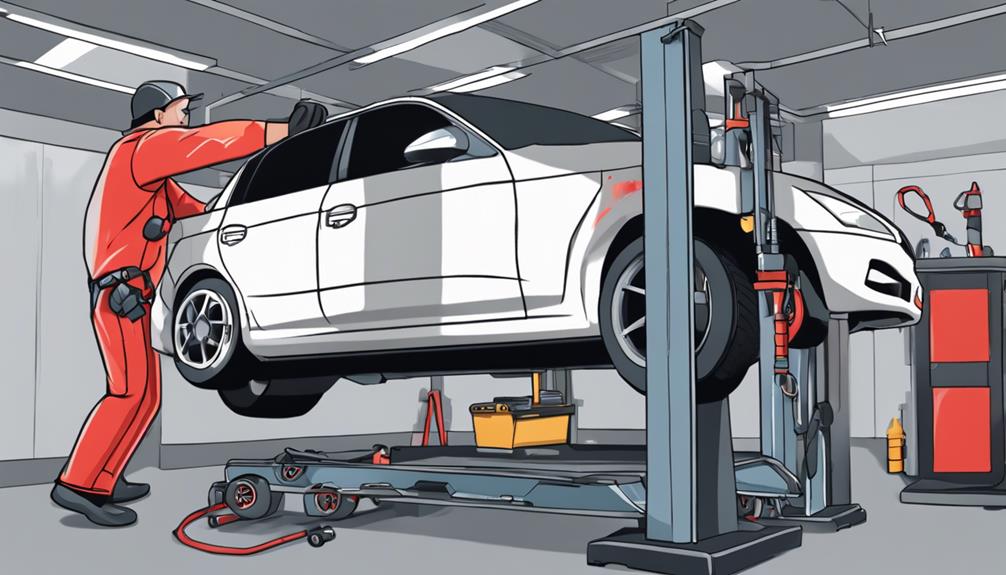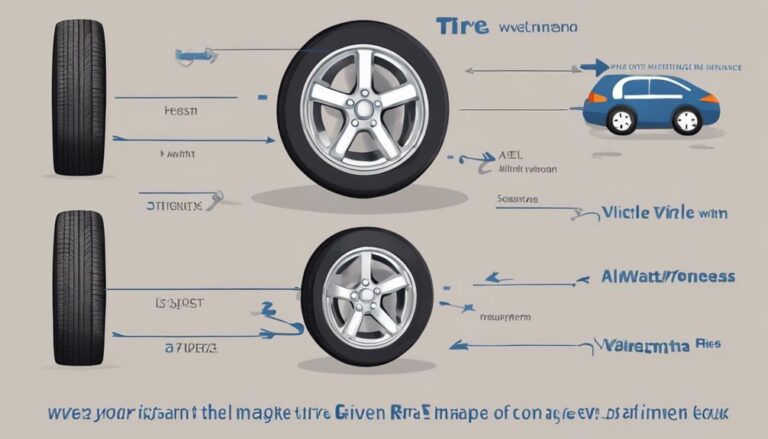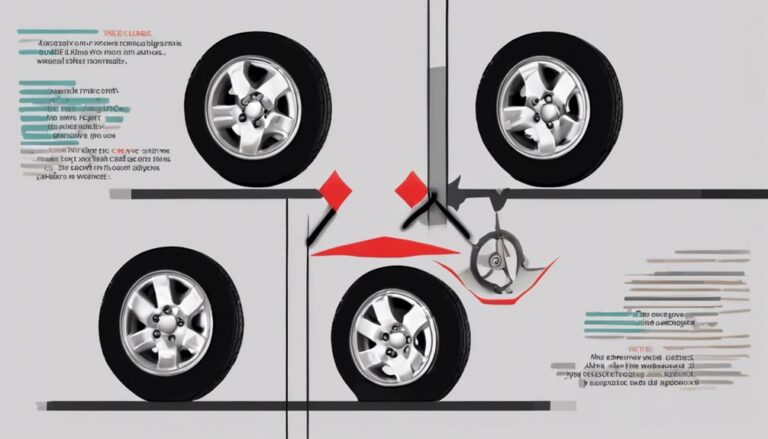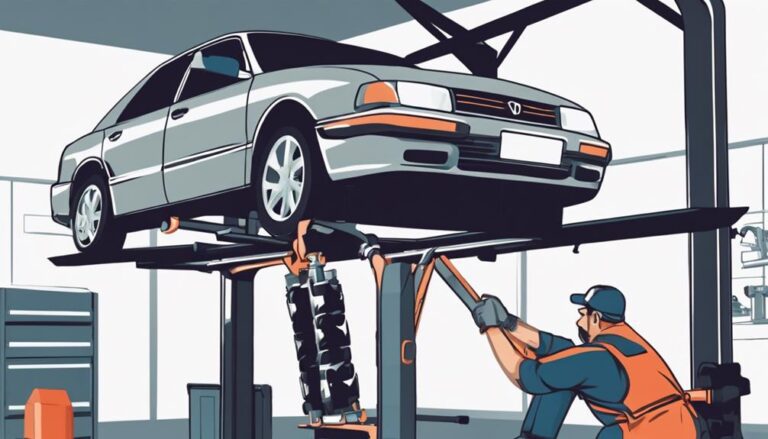7 Best Tips for Winter Tire Rotation and Alignment
You might think winter tire rotation and alignment are mere maintenance tasks, but in reality, they can make or break your winter driving experience. From ensuring optimal traction on icy roads to extending tire life, these practices are crucial.
So, what are the top 7 tips for effectively rotating and aligning your winter tires to keep you safe and secure during the frosty season? Let's explore the best strategies to navigate the winter wonderland with confidence and peace of mind.
Key Takeaways
- Regular tire rotation and alignment are essential for winter safety and performance.
- Follow recommended rotation patterns for even wear and optimal traction.
- Professional services ensure precise alignment and extended tire lifespan.
- DIY precautions and maintenance tips help maintain safe driving conditions.
Importance of Tire Rotation in Winter
Regular winter tire rotation is crucial for maintaining tire performance and safety in cold weather conditions. When it comes to winter driving, ensuring proper tire maintenance through regular rotation is paramount. By rotating your tires, you can achieve even wear, extending their lifespan and enhancing performance in challenging winter conditions. This even wear is vital for optimal traction on snowy and icy roads, reducing the risk of accidents caused by worn-out tires. Additionally, winter tire rotation contributes significantly to the stability and control of your vehicle, ultimately improving handling and safety when faced with the harsh realities of winter driving.
Furthermore, tire rotation plays a vital role in addressing alignment issues that may arise. By promoting even weight distribution across all tires, rotation enhances traction on slippery surfaces, ensuring a safer driving experience. This practice also helps prevent the formation of dangerous road ruts by evenly distributing tire wear, minimizing corrosion impact, and reducing the risk of rust during winter.
Benefits of Regular Tire Alignment
Regular tire alignment ensures even tire wear, extending tire longevity and reducing the need for premature replacements.
Improved alignment enhances your vehicle's handling and steering response, crucial for safe driving conditions.
Neglecting alignment can lead to decreased fuel efficiency and compromised driving stability, emphasizing the necessity of regular checks to maintain optimal performance.
Alignment Improves Tire Wear
Ensuring proper alignment of your tires is essential for optimizing tire wear and enhancing overall vehicle performance. Regular tire alignment plays a crucial role in extending the lifespan of your tires, promoting even wear patterns that contribute to tire longevity.
By maintaining correct alignment, you not only improve fuel efficiency but also prevent steering issues and uneven wear that can compromise stability and control, especially in challenging winter driving conditions.
Annual alignment checks are highly recommended to promptly address any misalignment concerns, ensuring your tires wear evenly and your vehicle performs at its best.
Alignment Enhances Vehicle Handling
To optimize vehicle handling and ensure peak performance, maintaining proper alignment of your tires is crucial. Proper alignment not only enhances winter traction but also significantly improves handling, providing you with better control and stability on slippery roads.
By aligning your wheels correctly, you reduce the risk of uneven tire wear, which can impact fuel efficiency and overall performance. Additionally, a well-aligned vehicle minimizes steering issues, resulting in a smoother and safer driving experience.
To experience the benefits of improved handling and winter traction, it's essential to schedule annual alignment checks. By doing so, you can maintain optimal vehicle performance and safety, giving you peace of mind during challenging winter conditions.
When to Rotate Your Winter Tires

For optimal performance and safety during winter driving conditions, it's recommended to rotate your winter tires every 6,000 miles. Winter tire longevity is greatly influenced by regular tire rotation. By adhering to the suggested tire rotation frequency, you ensure that all four tires wear evenly. This even wear pattern extends the lifespan of your winter tires, maximizing their effectiveness in harsh winter conditions.
It's advisable to plan your tire rotations before the winter season begins to promote uniform wear across all tires. Uneven tire wear can significantly impact the traction and handling of your vehicle in winter weather, potentially compromising safety. Therefore, maintaining a consistent rotation schedule is crucial for preserving stability and control on icy or snowy roads.
Prioritize regular tire rotations to enhance the longevity and performance of your winter tires, ultimately promoting safer winter driving experiences.
Proper Tire Rotation Patterns
To properly maintain your winter tires and ensure even wear, understanding the appropriate tire rotation patterns based on your vehicle type is essential. Different vehicles require specific rotation patterns to promote winter safety and maximize tire longevity. Here are some common tire rotation patterns:
| Vehicle Type | Rotation Pattern |
|---|---|
| Front-Wheel Drive | Front-to-Back |
| Rear-Wheel Drive | Back-to-Front |
| All-Wheel Drive | Side-to-Side |
| Directional Tires | Cross Rotation |
Following these recommended rotation patterns helps distribute wear evenly, leading to enhanced winter safety and prolonged tire lifespan. By adhering to the manufacturer's guidelines for rotation intervals, you can maintain optimal performance and ensure balanced handling. Regular tire rotation not only improves traction and stability but also contributes to fuel efficiency. Remember, proper tire rotation is key to maximizing the longevity of your winter tires and keeping you safe on the road.
Signs Your Tires Need Alignment
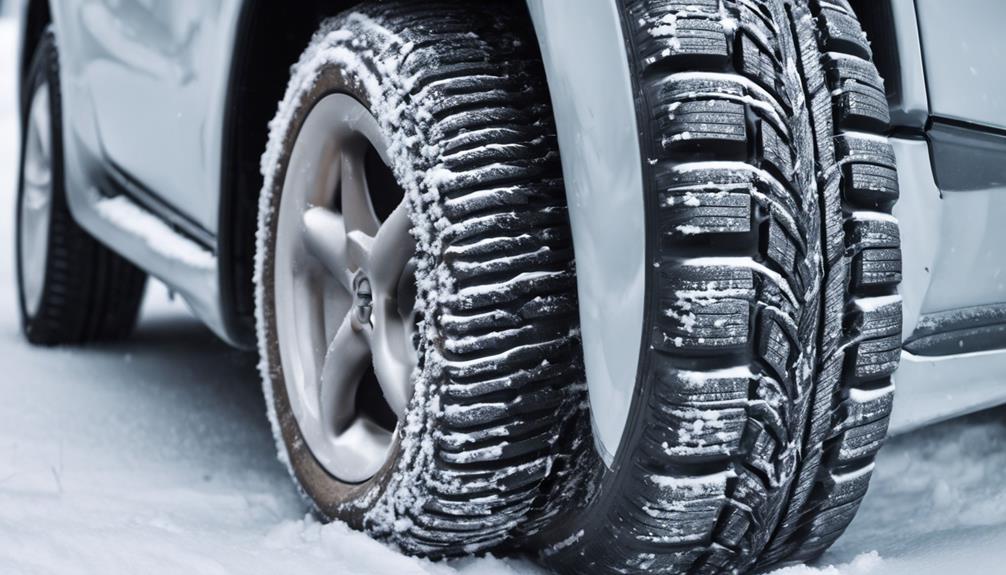
If you notice uneven tire wear or your vehicle pulling to one side while driving straight, these could be indications that your tires require alignment. Common causes of misaligned wheels include hitting potholes or curbs, which can throw off the alignment angles.
DIY solutions to check for misalignment can involve inspecting your tires for uneven wear patterns. If one side is wearing faster than the other, it may suggest misalignment. Another sign is a steering wheel that's off-center when driving straight. Additionally, if you experience squealing tires or vibrations while driving, this could signal the need for alignment.
Addressing alignment issues promptly is crucial to avoid further tire damage and ensure optimal vehicle performance. Keep an eye out for these signs to catch alignment problems early and consider seeking professional alignment services if you suspect your tires are misaligned.
DIY Tire Rotation Steps
When performing a DIY tire rotation, ensure proper tire placement to maintain the rotation pattern. Tighten lug nuts to manufacturer specifications using a torque wrench. Conduct regular tire inspections for wear and damage.
These steps are critical to ensure safe and efficient tire rotation, helping to maintain even tread wear and prolong tire lifespan. By following these guidelines diligently, you can enhance your vehicle's performance and safety during winter driving conditions.
Proper Tire Placement
For optimal tire maintenance and longevity, ensure even wear by rotating your front tires to the rear and rear tires to the front following the recommended pattern in your vehicle owner's manual. Proper tire placement is crucial for maintaining traction, stability, and control on winter roads. Utilize a torque wrench to secure lug nuts to the manufacturer's specifications, preventing issues like vibration and loose wheels. Check tire pressure and ensure wheel balance during rotation to enhance overall performance. Regularly inspect tires for signs of uneven wear, which can indicate alignment problems that need prompt attention. DIY tire rotation is a cost-effective way to promote safe driving and maximize the lifespan of your tires.
| Tire Placement | Front Left | Front Right | Rear Left | Rear Right |
|---|---|---|---|---|
| Position | Rear | Rear | Front | Front |
Correct Lug Nut Torque
To ensure proper wheel installation and prevent potential safety hazards, it's essential to adhere to the manufacturer's specified torque values when tightening lug nuts during a DIY tire rotation. Here are key points to consider:
- Lug nut maintenance: Regularly check for any signs of wear or damage on lug nuts to ensure they can withstand the specified torque without issues.
- Torque calibration: Use a torque wrench set to the manufacturer's recommended torque value to tighten lug nuts accurately and prevent over-tightening or under-tightening.
- Wheel safety, DIY precautions: Avoid using impact wrenches as they can easily over-tighten lug nuts, potentially causing damage to the wheels or warping brake components.
Following these steps will help maintain wheel integrity and alignment, ensuring a safe driving experience after DIY tire rotation.
Regular Tire Inspection
Inspecting your tires regularly is crucial for maintaining safety and optimal performance, especially when performing a DIY tire rotation. When conducting your tire inspection, ensure to check the winter tire pressure and look for any tire sidewall damage. Here is a table summarizing key aspects to inspect during your tire check:
| Aspect | Details |
|---|---|
| Tread Depth | Use a quarter to check for safe tread depth |
| Wear Patterns | Look for uneven wear patterns on tires |
| Bulges | Check for any bulges on the tire sidewall |
| Rotation Recommendation | Follow the owner's manual for optimal handling |
Regular tire inspections help identify issues like improper winter tire pressure or tire sidewall damage, enabling you to address them promptly and ensure safe driving conditions.
Professional Alignment and Rotation Services
Ensure precise adjustment of your vehicle's wheel angles by opting for professional alignment services to enhance handling and safety. Expert technicians at Xtreme Tire Garage utilize specialized equipment to align wheels according to manufacturer specifications, ensuring maximum performance.
Here are the key benefits of professional alignment and rotation services:
- Optimal Handling: Professional alignment services guarantee that your wheels are precisely adjusted, enhancing your vehicle's ability to navigate winter conditions with improved stability and control.
- Extended Tire Lifespan: Rotation services involve switching tire positions to promote even tread wear, preventing premature tire deterioration and extending the lifespan of your tires.
- Fuel Efficiency: By maintaining proper alignment and rotated tires, you not only enhance safety but also improve fuel efficiency by reducing unnecessary friction and drag on the road.
Choose professional alignment and rotation services to keep your vehicle in top condition for winter driving, ensuring safety, longevity of your tires, and optimal performance.
Frequently Asked Questions
Do You Need an Alignment After Putting on Winter Tires?
After putting on winter tires, you should align your vehicle. It's crucial for safety and performance. Winter tires can affect alignment, impacting handling and wear. Proper alignment ensures stability, control, and even tire wear, crucial on slippery roads.
Should I Get an Alignment Before or After Tire Rotation?
Before alignment, ensure wheels are properly adjusted for even wear. After rotation, align to maximize tire lifespan and performance. Identifying misalignment issues beforehand allows for effective correction, maintaining optimal tire performance and vehicle safety.
Does Rotating Tires Mess up Alignment?
Rotating tires does not directly mess up alignment, but it can impact tire wear. Proper rotation can enhance performance. However, if alignment issues exist, rotating tires alone may not fix the problem, leading to uneven wear.
How Can I Improve My Tire Traction in the Snow?
To improve tire traction in snow, adjust your driving technique by braking gently and avoiding sudden movements. Check winter tire pressure regularly for optimal grip. Properly inflated tires provide better traction. Remember, your safety comes first.
Conclusion
In conclusion, ensuring your winter tires are properly rotated and aligned is crucial for optimal performance and safety during the colder months.
By following recommended rotation patterns and addressing alignment issues promptly, you can extend the lifespan of your tires and improve your vehicle's handling on icy roads.
Remember, taking proactive steps to maintain your tires can lead to a smoother and more enjoyable winter driving experience.

